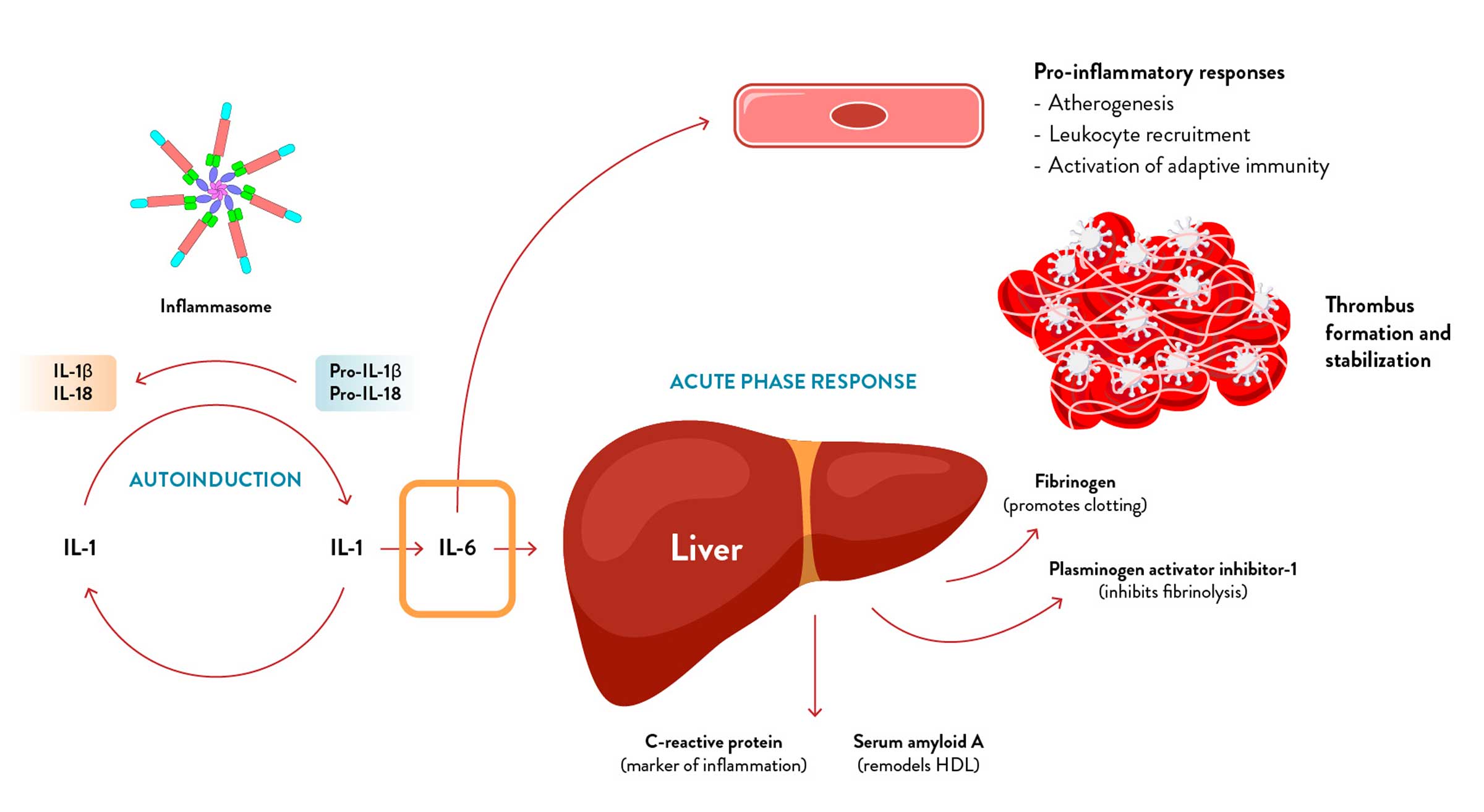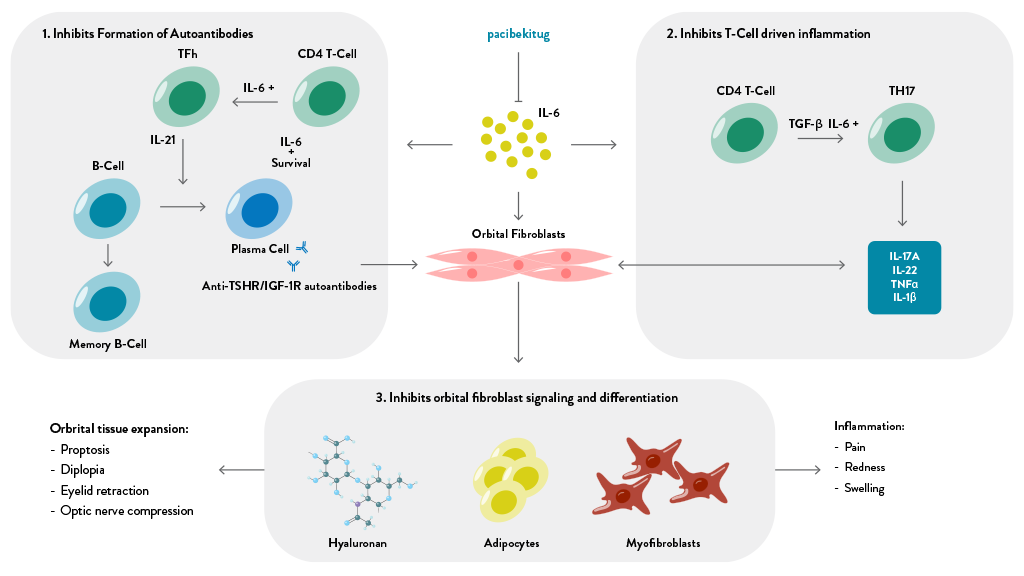Cardiovascular Inflammation
Atherosclerotic Cardiovascular Disease (ASCVD)
Atherosclerotic cardiovascular disease (ASCVD) is a group of disorders caused by plaque buildup and rupture in the artery walls and includes myocardial infarctions (heart attacks) and strokes. Despite the wide availability of once-daily, oral medicines like lipid lowering therapies, antihypertensives, and antiplatelet agents, cardiovascular disease continues to be a leading cause of morbidity and mortality worldwide, with an estimated 20 million deaths per year. Given this high disease burden, we believe there is a significant unmet need for additional therapies that target alternative risk factors for ASCVD, particularly inflammation.
Role of IL-6 in ASCVD
The role of inflammation and IL-6 in ASCVD pathogenesis has been the focus of study for over two decades. Nonclinical research has implicated IL-6 in plaque formation, erosion, and rupture. Cardiovascular system endothelial cells express IL-6 in response to inflammation, stress, and/or injury. Additionally, IL-6 has demonstrated the ability to upregulate cell adhesion molecules and plays a role in vascular permeability. Multiple clinical and human genetic studies have implicated elevated IL-6 levels with risk of future major adverse cardiovascular events.

Adapted from: Libby et al., Cells (2021) and Libby et al., Int J Cardiol (2018)
Emerging breakthrough insights from the IL-6 renaissance have generated a wealth of evidence for the key role of IL-6 in ASCVD. Analysis of trial data across tens of thousands of ASCVD patients has demonstrated inflammation is a stronger predictor of risk of MACE and CV-related death than cholesterol levels. Studies of anti-inflammatory mechanisms in ASCVD have demonstrated the importance of specifically targeting IL-6 driven inflammation.
In particular, results from the CANTOS study showed that canakinumab, a monoclonal antibody which inhibits IL-1β, a key cytokine in the IL-6 pathway, significantly reduced MACE and CV death risk in ASCVD patients. Importantly, this benefit was notably larger in patients whose IL-6 levels were lowest following one dose of canakinumab.
Thyroid Eye Disease (TED)
TED, also known as Graves’ ophthalmopathy, is a debilitating autoimmune disorder that affects the eyes and surrounding tissues. It is commonly associated with Graves’ disease, an autoimmune disorder that affects the thyroid gland. The annual incidence of TED in the United States is estimated to be around 16 per 100,000 females and 3 per 100,000 males, or approximately 30,000 new cases a year.
TED occurs in two phases – the initial active phase, characterized by high inflammation which lasts between 6-36 months and the later inactive phase with lower inflammatory involvement. TED is characterized by the production of autoantibodies against thyroid-stimulating hormone receptor (TSHR) which are also implicated in Graves’ disease. These autoantibodies target the tissue surrounding the eye, leading to inflammation, swelling, and tissue remodeling.
TED can cause significant discomfort and can be sight-threatening if left untreated. Initial symptoms of TED may include dryness and irritation of the eyes, sensitivity to light, excessive tearing, double vision (diplopia), and a sensation of pressure behind the eyes. As the disease progresses, patients may develop retraction of their upper eyelids, swelling and redness around the eyes, and bulging of the eyes (proptosis). In severe cases, swelling and stiffness of the muscles that move the eyes can cause misalignment and even vision loss.
Role of IL-6 in TED
IL-6 is believed to play a critical role in the pathogenesis of TED, including in autoantibody production, T-cell mediated inflammation, and orbital fibroblast activity.

There is a large body of evidence supporting the role of IL-6 in TED including:
- IL-6 and soluble IL-6R levels are elevated in TED patients and correlate with disease activity.
- In a study of Graves’ Disease patients, those that developed TED had significantly higher IL-6 levels than those that did not.
- A growing body of literature documents successful clinical experiences with other IL-6 pathway inhibitors, reporting meaningful improvements in proptosis, inflammation (measured by the Clinical Activity Score), and diplopia

